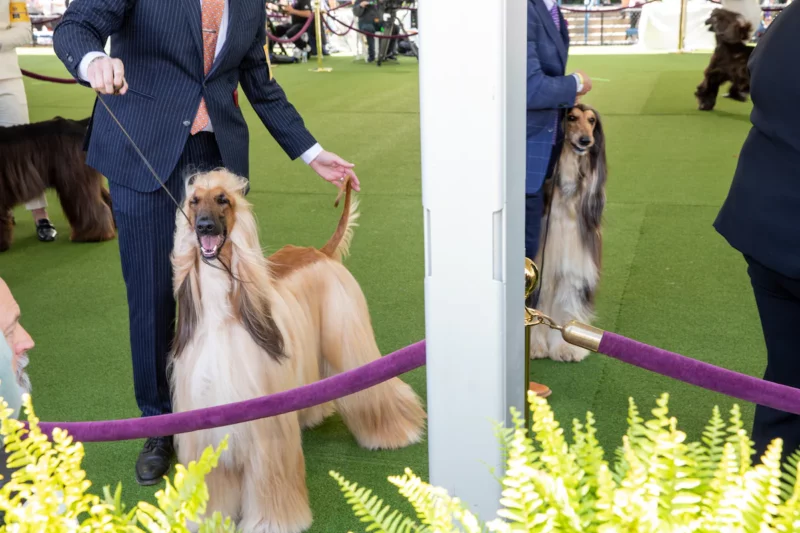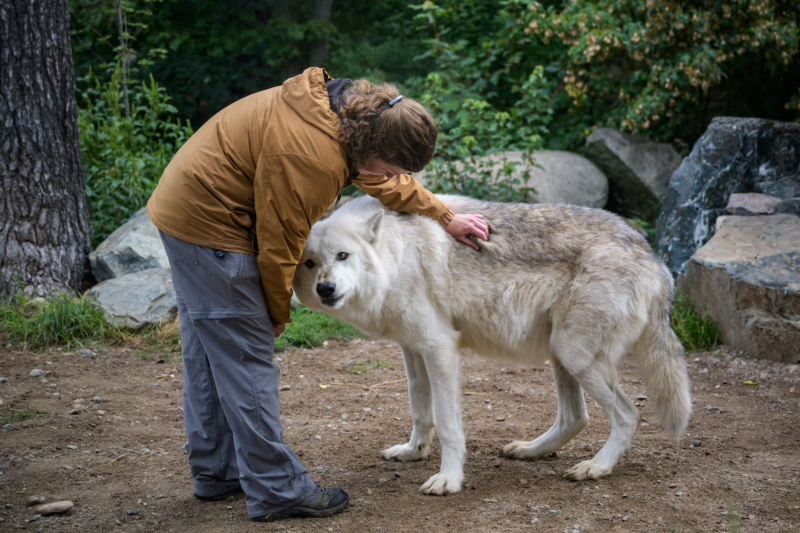
The dog is humankind’s greatest invention. The wheel, the lightbulb, concrete — all amazing. Top of the line. But nothing in human creation has been as essential and adaptable as the countless descendants of the ancient gray wolf.
How did we do it? I spent three years following the traveling carnival of American dog shows — like a Grateful Dead tour with Milk-Bones — in search of the answer. My journey culminated in the dog world’s most prestigious event: the Westminster Dog Show. Show dogs are bred from the purest stock, culled from litters at just a few weeks old, trained with the dedication of Olympic gymnasts — and groomed like supermodels. They’d be unrecognizable to their ancient kin — and to ours.
The American Kennel Club, arbiter of bloodlines, now recognizes about 200 breeds, while tracking crossbreeds like goldendoodles, and even mutts. From the most massive mastiff to the tiniest teacup chihuahua, all dogs trace back to the same common ancestors.
Scientists think this weird and powerful companionship of humans and dogs might have started somewhere between 15,000 and 30,000 years ago. Humans of that era were mainly hunters traveling in camps. They ate meat by the fire. The cooking meat attracted wolves who were drawn to the aroma but stayed safely out of range of the flames. Every so often, a human would fling a bone into the darkness. The wolves gnawed on the bones. They trailed the humans to the next campsite, still keeping their distance. There was an unspoken arrangement. The wolves alerted the humans to intruders, and the humans fed the wolves well.
Over time the wolves crept closer. One fateful night a curious wolf came all the way into the firelight. The humans didn’t chase it off.
Slowly, the humans mingled with the wolves. After days or months or generations or centuries, a wolf curled up at a human’s feet. Maybe got its belly rubbed. That was the first dog.
As far as we can tell, dogs are the first animals that humans ever tamed. The wolves that hung out with humans found themselves changing inside and out. They developed shorter muzzles and smaller teeth. Their instinct to run became a desire to stay close. With time, dogs were manufactured through breeding to meet different human needs. We made huskies to pull sleds and Newfoundlands to pull fish nets and dachshunds to catch badgers.

Dogs taught humans the early science of designer genes. In the mid-19th century, as we moved off the farm and into the factory, we created dogs we could bring indoors at the end of a workday. And we created dogs we could bring to work: French bulldogs (now the most popular breed in America) started out as literal lap dogs for lace-makers in France. We molded dogs to be friends, companions, playmates and unofficial therapists.
So dogs are not just humanity’s greatest invention but also its longest-running experiment.
That’s one way to look at it.
Now switch out the frame. Swap the subject and the object. Change the verbs.
Here’s another view:
Around the time early humans evolved, Neanderthals also walked the planet. At some point — roughly 40,000 years ago — humans started to thrive while Neanderthals died off. And this is about the time when those first curious wolves began to evolve into dogs. Some scientists believe the timing is not a coincidence. Maybe the dog was the key advantage in the triumph of humankind.
Dogs enabled humans to settle down and stop their endless wandering. Dogs protected humans at this vulnerable transition from nomadic to settled life. Dogs did work that humans did not have the strength or stamina to do: guarding, herding, hunting, pulling sleds. They created time for humans to build and think and create without having to focus every moment on the next meal or the next threat.
We domesticated dogs, and they domesticated us.
Today, dogs provide not just companionship but also an uncomplicated kind of love in an ever more complicated world. And for those restless souls wandering from town to town, chasing job after job — nomads again — a dog can be an anchor, something to hold on to on a lonely night.
From the gray wolf by the ancient fire to a coifed Pomeranian prancing around the show ring, dogs have been with us nearly as long as we have been human.
They might be our greatest creation. And we might be theirs.
Tommy Tomlinson is the author of “Dogland”. He lives in Charlotte with his wife, her mother and a cat named Jack Reacher.
